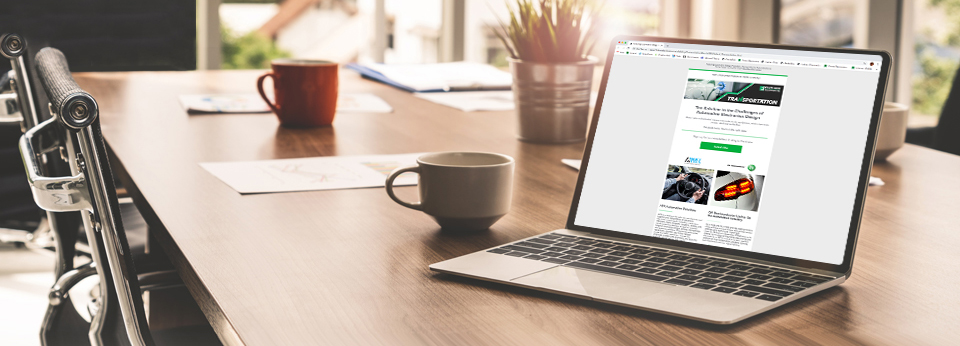FTM / Motor Control / Nexperia — Application-Specific MOSFETs for 36V Battery Systems


A 36V lithium-ion battery is today a common power source for tools and outdoor power equipment. Products powered by a 36V battery benefit from high power output and long battery life, while also being relatively light and easy to use. The high energy density of the 36V battery, however, also entails the implementation of efficient and safe battery isolation.
The need for isolation arises from the safety risks inherent in the technology. Lithium-ion batteries contain a flammable electrolyte: if damaged or incorrectly charged or discharged, this can cause a fire or explosion. To safely charge and discharge the cells and isolate them from the load, battery system designers generally use a MOSFET, as illustrated in Figure 1.

Fig. 1: A simple high-side discharge MOSFET in a typical application circuit
The most common requirements for such a MOSFET are:
Other factors which designers consider when evaluating options for a high-side discharge MOSFET include:
In a battery pack which contains 10 cells in series, the voltage is typically 36V; the maximum charging voltage is 42 V. A MOSFET which has a breakdown voltage rating between 45 V and 52.5 V provides at least 80% derating.
A 60 V MOSFET is typically used in these applications, however, since it provides even higher derating. But this comes at the expense of other factors such as avalanche rating, SOA, gate charge, and leakage performance. In many MOSFETs, the silicon architecture deliberately thins the cell pitch to achieve low on-resistance, but this has the effect of shrinking the SOA and reducing avalanche energy capability.
Design engineers, then, have become used to accepting a compromise between efficiency and isolation capability. The latest application-specific 50 V and 55 V MOSFETs from Nexperia, however, eliminate the need for compromise. They benefit from a superior superjunction technology which produces lower on-resistance without impairing performance in the other parameters.
For example, the Nexperia PSMNR90-50SLH in an LFPAK88 clip-bonded package features maximum on-resistance of 0.9 mΩ at a gate-source voltage of 10 V. It has a maximum drain current rating of 410 A. Despite its low on-resistance, this MOSFET also offers best-in-class SOA current capability of 8.1 A at 40 V for a 1 ms pulse, shown in Figure 2.

Fig. 2: 40 V/1 ms SOA plot for the PSMNR90-50SLH MOSFET
For more space-constrained applications, 50 V and 55 V parts with a 200 A current rating are also available in a 5 mm x 6 mm LFPAK56E package.
In addition to optimizing the key parameters for use in 36V battery systems, Nexperia has also hardened the operation of these MOSFETs in high temperatures. It has performed high-temperature reverse bias life testing (HTRB) for 1,000 hours at 175°C and 100% of the device’s drain-source voltage rating.
The industry standard for 60 V parts is 1,000 hours at 175°C and only 80% of the drain-source voltage rating, 48 V, according to MIL-STD-750-1 M1038 Method A.
Wide range of MOSFET product options
Nexperia discharge MOSFETs are supplied in a 100% clip-bonded LFPAK package. This package is robust, offers high board-level reliability, and provides excellent thermal performance. The LFPAK package is suitable for automotive as well as industrial and consumer applications.
| Part Number | Maximum Drain-source Voltage | Package | On-resistance @ 10 V | Maximum Drain Current | Avalanche Energy @ 25 A | SOA Current @ 40 V for 1 ms |
| PSMN1R5-50YLH | 50 V | LFPAK56E | 1.7 mΩ | 200 A | 2000 mJ | 5 A |
| PSMN2R0-55YLH | 55 V | LFPAK56E | 2.0 mΩ | 200 A | 1770 mJ | 4.5 A |
| PSMNR90-50SLH | 50 V | LFPAK88 | 0.9 mΩ | 410 A | 7400 mJ | 8.1 A |
| PSMN1R2-55SLH | 55 V | LFPAK88 | 1.2 mΩ | 330 A | 6400 mJ | 8.1 A |
Nexperia MOSFETs with a large SOA for use in 36V li-ion battery packs
Share This

Get access to the latest product information, technical analysis, design notes and more
Be at the forefront of New Technology Innovations
Be at the forefront of New Technology Innovations
© 2025 Future Electronics. All rights reserved. Privacy | Terms & Conditions of Sale | Terms of Use | Accessibility